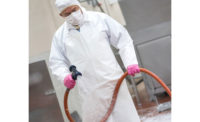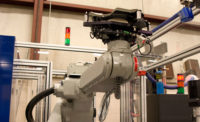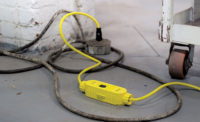Workplace training — and auditing, for that matter — just got more complicated. This spring, the Trump administration announced plans to shift food safety inspections in hog plants to plant employees, cutting as much as 40 percent of federal inspectors on slaughter lines in some plants. Training employees to identify diseased and contaminated pork would rely on plant owners.
The Obama administration gave poultry plant owners more ownership of safety inspections, as well.
This summer, Tyson Fresh Meats petitioned the Trump administration to allow its employees to take over the first step of carcass inspections: identifying unsuitable beef carcasses and trimming defects at its Holcomb, Kan., plant, instead of U.S. Department of Agriculture (USDA) inspectors, which is under review.
“I would push back on the notion that ‘plants are inspecting themselves,’” says Tom Super, senior vice president of communications, National Chicken Council, based in Washington, D.C. “FSIS (USDA Food Safety and Inspection Service) inspectors are still in every plant inspection; chicken and plants cannot operate legally without them there. Under NPIS (New Poultry Inspection System), plant employees are given more responsibility for looking for defects and quality issues, but not food safety issues.”
Self-auditing is undertaken, partly, to increase line speeds, although the Obama administration did not eventually agree to increase poultry’s line speeds.
Where do these changes leave USDA inspectors? The USDA’s attention would then be focused on more targeted safety checks, if quality control shifts from government inspectors to factory workers.
“As companies’ responsibilities to self-audit have increased, the question of objectivity remains in the forefront: Is the fox watching the hen house?” says Jen Allen, vice president engineering and operations, Allen Safety, based in Orlando, Fla. “Is a manager able to provide an objective audit when the manager they are auditing will be at the same safety conference and work dinner, or will be auditing their location in six months?”
The question of continuous improvement also becomes significant. “How is the company getting fresh ideas for risk reduction or improved efficiency if auditors never see processes outside of their own company or division?” says Allen. “How does the company identify if all locations across the platform have a process with significant risk if each facility has become complacent with that task before an injury or fatality occurs?”
In scenarios where companies self-audit successfully, Allen says, “they always still have a third party validate their processes and systems to keep their auditors on their toes, and ahead of the injury or litigation.”
Training new hires
Employee training usually touches on hands-on cutting techniques, food and worker safety measures, communication skills and preventing shrink.
“All of these training topics are important,” says Matt Spencer, director of human resources and safety programs, U.S. Poultry & Egg Association (USPOULTRY), based in Tucker, Ga.
But company orientation remains critical to employees getting off to a good start. “One of the training areas that garners a major focus is the orientation, or on-boarding, process,” says Spencer. “Educating new-hire employees not only on how to acclimate to working is vital.”
Simply put, employee training should be focused on how the employer wants the employee to execute their job tasks in a real-world environment.
“If an employee’s job includes lock out, chemical usage, machine assembly or knife usage, their training should include hands-on training on how to execute these job tasks, in their work area, under the conditions in which they would be working,” Allen says.
Otherwise, if employees aren’t given proper information they will have to answer questions themselves, and may not come up with the correct answer. “Anything not covered in a policy, procedure or training (course) creates a gray area where the employee is forced to freelance,” says Allen. “Freelancing, in turn, creates a risk of employee injury, as well as production inefficiency.”
Balancing training vs. working
One of the most difficult barriers for completing training is having the ability to pull employees off the floor long enough provide quality training, Allen says.
“It becomes difficult to keep running the floor short-handed and still meet customer demands while employees are in training. So, this adds pressure to cut training and competency verifications short,” Allen says. “Hands-on training can surpass cultural and language barriers, and also has longer staying power with employees versus verbal or slideshow presentations. But because it can be more time intensive, it is rarely a tool that is used.”
Remote trainers, educational systems and digital devices continue to be utilized, particularly as language and educational barriers persist.
“Online Learning Management Systems (LMS) are increasingly used in the industry,” says Spencer. “This training style provides the ability to offer picture-based, non-verbal educational material to works. Training can easily be translated into numerous languages and taken at the workers’ own pace.”
There’s still a place for good old-fashioned face-to-face interaction, as well. “As training technology changes, so does the ability to audit employee comprehension of the courses offered,” says Spencer. “Industry members utilize trainers to emphasize and monitor proper work behaviors, as well as address training deficiencies.”
Technology, it seems, works best when it’s also administered by managers.
“We’re seeing an increase in interactive training with employees, where competency verification is checked throughout the presentation and shown on a screen,” says Allen. “We’ve also seen an increase in management interaction with employees 30, 60 and 90 days after training to check in and see if they have questions or difficulties.”
Putting the safety office on production floors ensures managers remain accessible for employees to ask questions.
“This helps employees feel as though they are part of the process — working through complications together to find solutions everyone can live with,” Allen says. “This has been a significant improvement, as opposed to the mindset of ruling from an office.”
As the training process becomes more high-tech, but valuable, it’s important not to lose sight of what employees are saying during training — and after.
“If employees feel as though they are not part of the process and solutions, they are changing companies until they find an employer that values their ideas and voice,” says Allen. NP










